Cecil Antonio Richardson was an English theatre and film director, producer and screenwriter, whose career spanned five decades. He was identified with the "angry young men" group of British directors and playwrights during the 1950s, and was later a key figure in the British New Wave filmmaking movement.
The "angry young men" were a group of mostly working- and middle-class British playwrights and novelists who became prominent in the 1950s. The group's leading figures included John Osborne and Kingsley Amis; other popular figures included John Braine, Alan Sillitoe, and John Wain. The phrase was originally coined by the Royal Court Theatre's press officer in order to promote Osborne's 1956 play Look Back in Anger. It is thought to be derived from the autobiography of Leslie Paul, founder of the Woodcraft Folk, whose Angry Young Man was published in 1951.

John James Osborne was an English playwright, screenwriter, actor, and entrepreneur. Born in London, he briefly worked as a journalist before starting out in theatre as a stage manager and actor. He lived in poverty for several years before his third produced play, Look Back in Anger (1956), brought him national fame.

Top Girls is a 1982 play by Caryl Churchill. It centres on Marlene, a career-driven woman who is heavily invested in women's success in business. The play examines the roles available to women in old society, and what it means or takes for a woman to succeed. It also dwells heavily on the cost of ambition and the influence of Thatcherite politics on feminism.
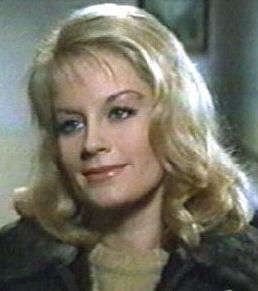
Eileen Mary Ure was a British actress. She was the second Scottish-born actress to be nominated for an Academy Award, for her role in the 1960 film Sons and Lovers.
Treats is a 1975 romantic drama play by Christopher Hampton about a love triangle.

The Entertainer is a 1960 British kitchen sink drama film directed by Tony Richardson, produced by Harry Saltzman and adapted by John Osborne and Nigel Kneale from Osborne’s stage play of the same name. The film stars Laurence Olivier as Archie Rice, a failing third-rate music-hall stage performer who tries to keep his career going even as the music-hall tradition fades into history and his personal life falls apart. Olivier was nominated for an Oscar for Best Actor in a Leading Role.
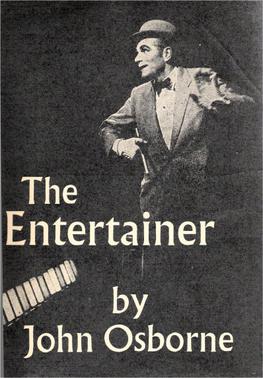
The Entertainer is a three-act play by John Osborne, first produced in 1957. His first play, Look Back in Anger, had attracted mixed notices but a great deal of publicity. Having depicted an "angry young man" in the earlier play, Osborne wrote at Laurence Olivier's request about an angry middle-aged man in The Entertainer. Its main character is Archie Rice, a failing music-hall performer. Years later, Tony Richardson, who directed The Entertainer's premiere season, described Archie as "the embodiment of a national mood ... Archie was the future, the decline, the sourness, the ashes of old glory, where Britain was heading". The first performance was given on 10 April 1957 at the Royal Court Theatre, London. This theatre was well-known for its commitment to new and non-traditional drama, and the inclusion of a West End star such as Olivier in the cast caused much interest.
Ghost from a Perfect Place is a two act play by Philip Ridley. It was Ridley's third stage play and premiered at the Hampstead Theatre, London on 7 April 1994. The part of Travis Flood was played by the veteran, classical actor John Wood, for which he received general acclaim and was nominated for 'Best Actor' at the 1994 Evening Standard Drama Awards. The production was the third collaboration between Ridley and director Matthew Lloyd, who had directed all of Ridley's previous stage plays and would go on to direct Ridley's next play for adults Vincent River in 2000.
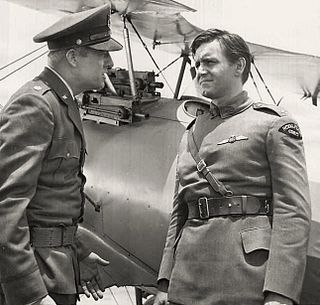
Kenneth William Michael Haigh was an English actor. He first came to public recognition for playing the role of Jimmy Porter in the play Look Back in Anger in 1956 opposite Mary Ure in London's West End theatre. Haigh's performance in the role on stage was critically acclaimed as a prototype dramatic working-class anti-hero in post-Second World War English drama.
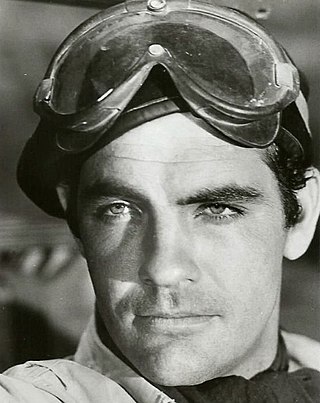
Gary Barrymore Raymond is an English film, television and theatre actor.

Look Back in Anger is a 1959 British kitchen sink drama film starring Richard Burton, Claire Bloom and Mary Ure and directed by Tony Richardson. The film is based on John Osborne's play about a love triangle involving an intelligent but disaffected working-class young man, his upper-middle-class, impassive wife (Alison) and her haughty best friend. Cliff, an amiable Welsh lodger, attempts to keep the peace. The character of Ma Tanner, only referred to in the play, is brought to life in the film by Edith Evans as a dramatic device to emphasise the class difference between Jimmy and Alison. The film and play are classic examples of the British cultural movement known as kitchen sink realism.

Look Back in Anger is a 1980 British film starring Malcolm McDowell, Lisa Banes and Fran Brill, and directed by Lindsay Anderson and David Hugh Jones. The film is based on John Osborne's play Look Back in Anger.
Personal Enemy is a play by John Osborne and Anthony Creighton. It was written in 1954, prior to Osborne's 'big break' with Look Back in Anger at the Royal Court Theatre in 1956, and first performed in Harrogate in 1955. It was thought that the play manuscript was lost, but copies were found in the Lord Chamberlain's archive in the British Library in 2008. The two plays were subsequently published as Before Anger, with a foreword by Peter Nichols. Personal Enemy was produced in its uncensored form for the first time in 2010 at the White Bear Theatre, as part of their Lost Classics Project, before transferring to New York's Brits Off Broadway festival at 59E59 Theaters in November of that year. The play is the only work by Osborne to be set in the United States.

Epitaph for George Dillon is an early John Osborne play, one of two he wrote in collaboration with Anthony Creighton. It was written before Look Back in Anger, the play which made Osborne's career, but opened a year after at Oxford Experimental Theatre in 1957, and was then produced at London's Royal Court theatre, where Look Back in Anger had debuted. It transferred to New York City shortly afterwards and garnered three Tony Award nominations.
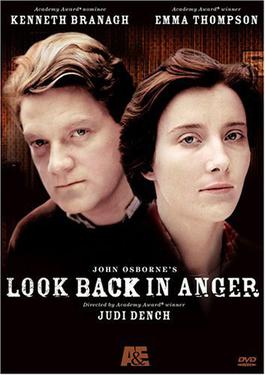
Look Back in Anger is a 1989 British videotaped television production of John Osborne's play. It features Kenneth Branagh, Emma Thompson, Siobhan Redmond, Gerard Horan, and Edward Jewesbury. It was directed by Judi Dench; and produced by Humphrey Barclay, Moira Williams, and First Choice Productions for Thames Television.
Aleks Sierz is a British theatre critic. He is known for popularising the term "In-yer-face theatre", which was the title of a book he published in 2001.
Sarah Goldberg is a Canadian actress. She is best known for her role as Sally Reed in the HBO dark comedy series Barry (2018–2023), which earned her a nomination for the Primetime Emmy Award for Outstanding Supporting Actress in a Comedy Series. She also originated the dual role of Betsey/Lindsey in the Royal Court Theatre's production of Clybourne Park, for which she was nominated for a 2011 Olivier Award, and later performed it on Broadway.

Déjàvu is a stage play by John Osborne performed in 1992. It was Osborne's final work for the theatre, the failure of which on the stage made him decide to give up play-writing. The play is a sequel to Osborne's first successful play, Look Back in Anger (1956); it portrays the life and thoughts of the central character from the earlier play, Jimmy Porter, in middle age.

The World of Paul Slickey (1959) is a play by John Osborne. It was Osborne's only musical, intended as a social satire on high-society gossip columnists. After the huge successes of Osborne's previous plays Look Back in Anger and The Entertainer, the play was to become "one of the most spectacular disasters in English theatre".













